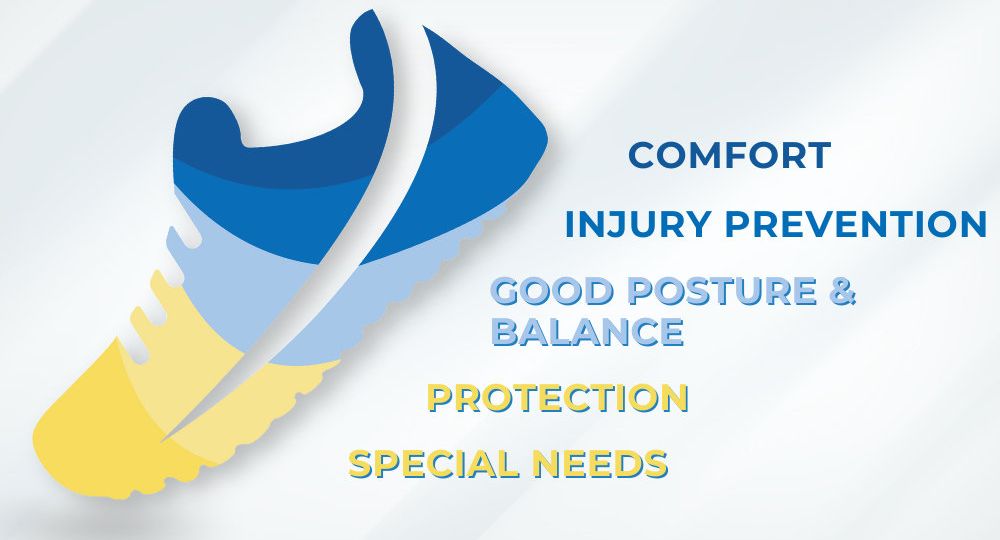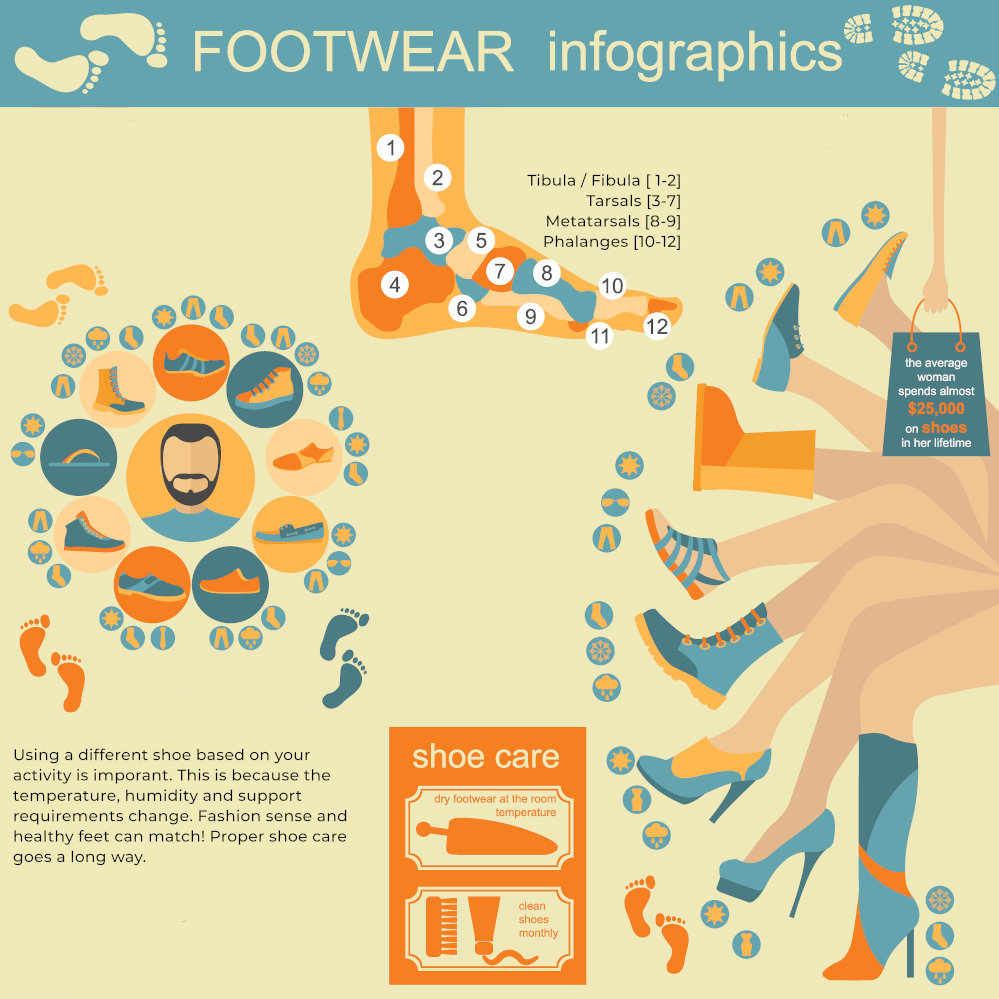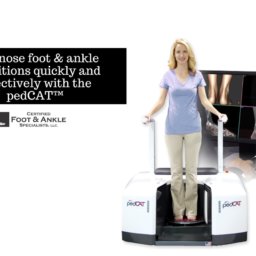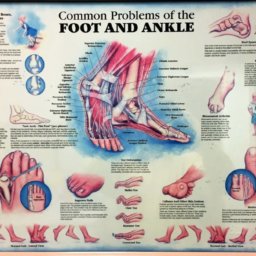
You can’t live without them, so might as well go with what is most comfortable. Wearing the right shoes for your feet establishes several aspects of foot health; so that you can avoid posture problems, bunions, hammertoes, blisters, and more. Let’s elaborate some more below
- Comfort: Wearing shoes that fit properly and provide adequate support can help prevent foot pain, blisters, and other foot-related problems.
- Injury prevention: Wearing shoes that provide adequate support and cushioning can help prevent sprains, strains, and fractures.
- Good posture and balance: Wearing shoes that have a firm heel and arch support can help improve posture and balance, which can reduce the risk of falls in older adults.
- Protection: Wearing shoes that protect the feet from hazards such as sharp objects, extreme temperatures, and chemicals can help prevent injuries and other foot-related problems.
- Special needs: People with certain medical conditions such as diabetes, arthritis, and flat feet, may require specific types of shoes to provide the support and comfort they need.
It is important to note that different activities require different types of shoes, for example, running shoes are designed to provide support and cushioning for the foot during high-impact activities such as running, while walking shoes have less cushioning and are more flexible to provide more natural foot movement while walking. Therefore it’s important to choose the right shoes for your feet for the activity you will be performing.
Heels can be bad for your feet and ankles for several reasons:
- Altered posture: Wearing heels can cause the foot to slide forward, which can lead to an altered posture and put extra stress on the ankle, knee, and back. This can cause pain and discomfort.
- Reduced stability: High heels can reduce stability and balance, making walking more difficult and increasing the risk of falls.
- Reduced ankle mobility: Heels can restrict ankle mobility and cause the ankle to bend at an unnatural angle, leading to ankle sprains and other injuries.
- Increased pressure on the ball of the foot: High heels can increase pressure on the ball, which can lead to pain and discomfort, as well as conditions such as hammertoes and metatarsalgia.
- Reduced shock absorption: High heels have less surface area than flat shoes, which means they provide less shock absorption and can cause more stress on the feet and legs.
It is recommended to limit the use of high heels, especially for long periods of time, and opt for shoes with lower heels or flats, that provide better support and cushioning for the feet and ankles.

Here are some tips for picking the right shoes for your feet:
- Measure your feet: It’s important to know your foot size and width, as shoes that are too tight or too loose can cause pain and discomfort.
- Try on shoes at the end of the day: Feet tend to swell throughout the day, so it’s best to try on shoes when your feet are at their largest.
- Walk around in the shoes: Make sure to walk around in the shoes to get a sense of how they feel and to check for any discomfort or pain.
- Check for support and stability: The shoe should provide adequate support and stability for the foot and ankle. Look for shoes with a firm heel counter and arch support.
- Look for a good fit: The shoe should fit comfortably and securely, with enough room to wiggle your toes.
- Check for proper ventilation: Look for shoes that have breathable materials to keep your feet dry and cool.
- Consider your foot condition: If you have any foot conditions, such as flat feet, high arches, or overpronation, it may be necessary to look for shoes that provide specialized support for those conditions.
- Consider the activity: Different activities require different types of shoes. For example, running shoes are designed to provide support and cushioning for the foot during high-impact activities such as running, while walking shoes have less cushioning and are more flexible to provide more natural foot movement while walking.
It’s best to consult with a podiatrist, who can give you a proper diagnosis and recommend the best shoe for your feet.
Here are some types of shoes to avoid for your feet and ankles:
- High heels: High heels can cause altered posture, reduced stability, reduced ankle mobility, increased pressure on the ball of the foot, and reduced shock absorption.
- Flip-flops: Flip-flops provide little support and can cause pain and discomfort in the feet and ankles. They also increase the risk of falls and injuries.
- Pointy-toed shoes: Pointy-toed shoes can squeeze the toes together and cause pain and discomfort, as well as conditions such as hammertoes and bunions.
- Shoes with poor arch support: Shoes without enough arch support can cause pain and discomfort, as well as conditions such as overpronation and plantar fasciitis.
- Shoes that are too tight or too loose: Shoes that don’t fit properly can cause pain, blisters, and other foot-related problems.
It is important to choose shoes that fit well, provide adequate support and stability, and are appropriate for the activity you will be performing. If you have any foot or ankle conditions, make an appointment with a local podiatrist, a trained physician can recommend the right shoes for your feet .
We have several locations in South Florida from Lake Worth, Pembroke Pines, Boyonton Beach, Vero Beach and Jupiter on the East Coast. We have clinics on the West Coast, Palm Habor, Cape Coral, Central Fort Myers and Tampa are taking new and seeing existing patients.





